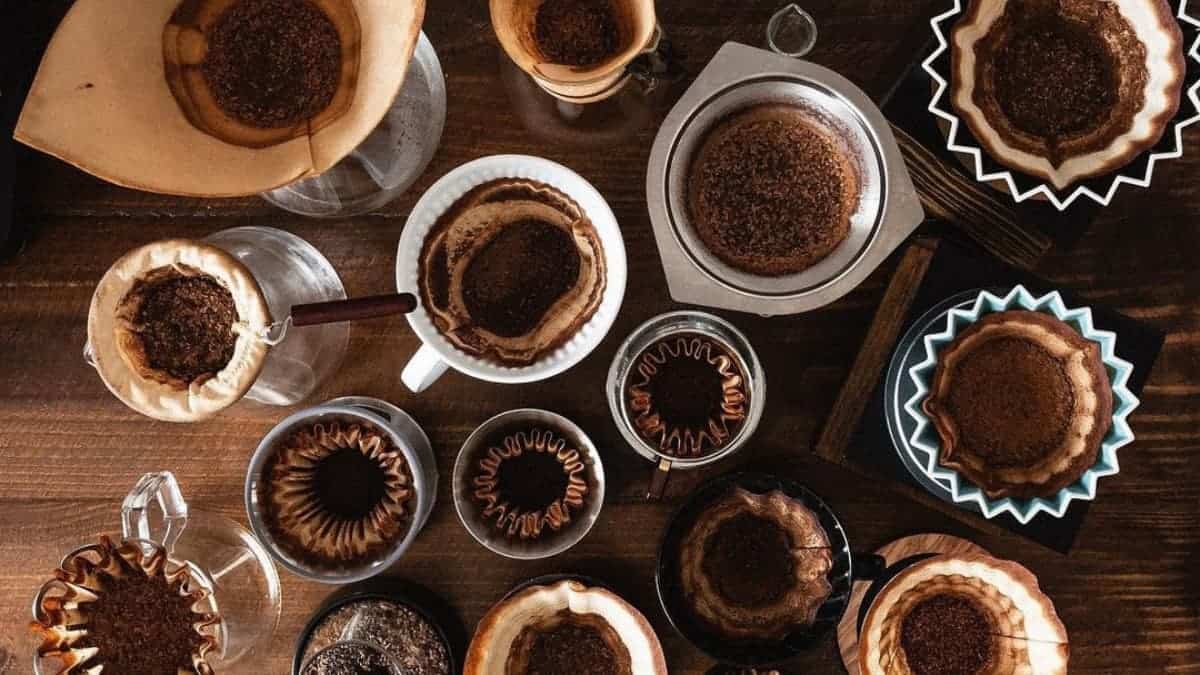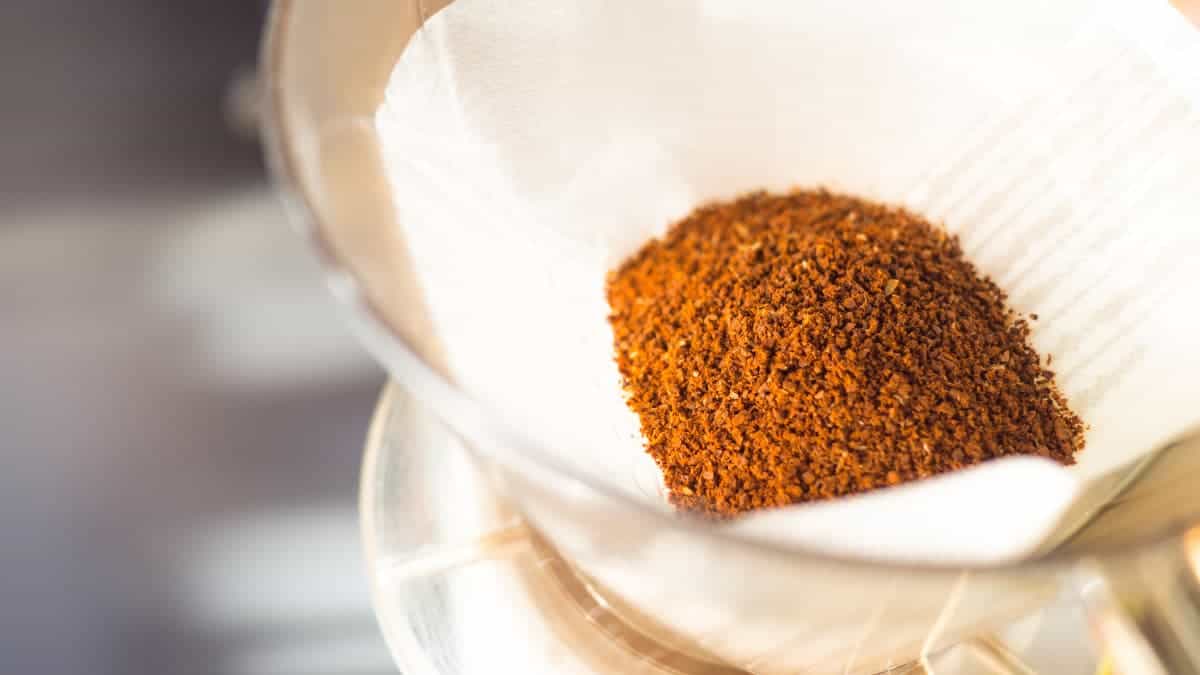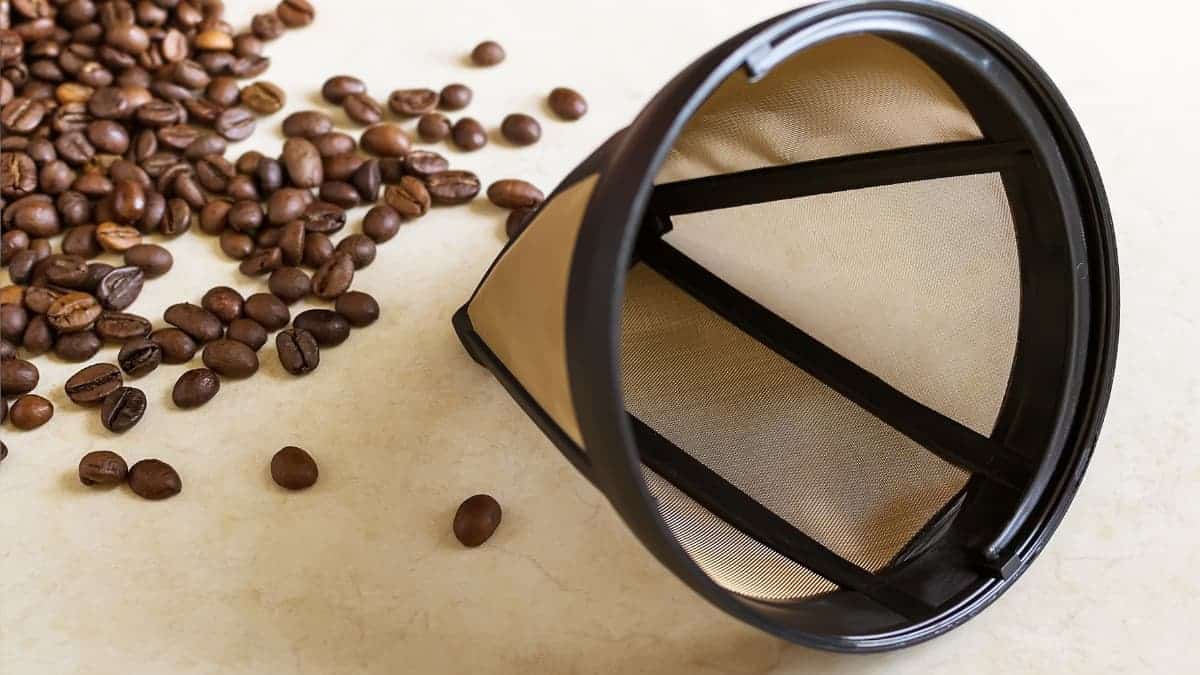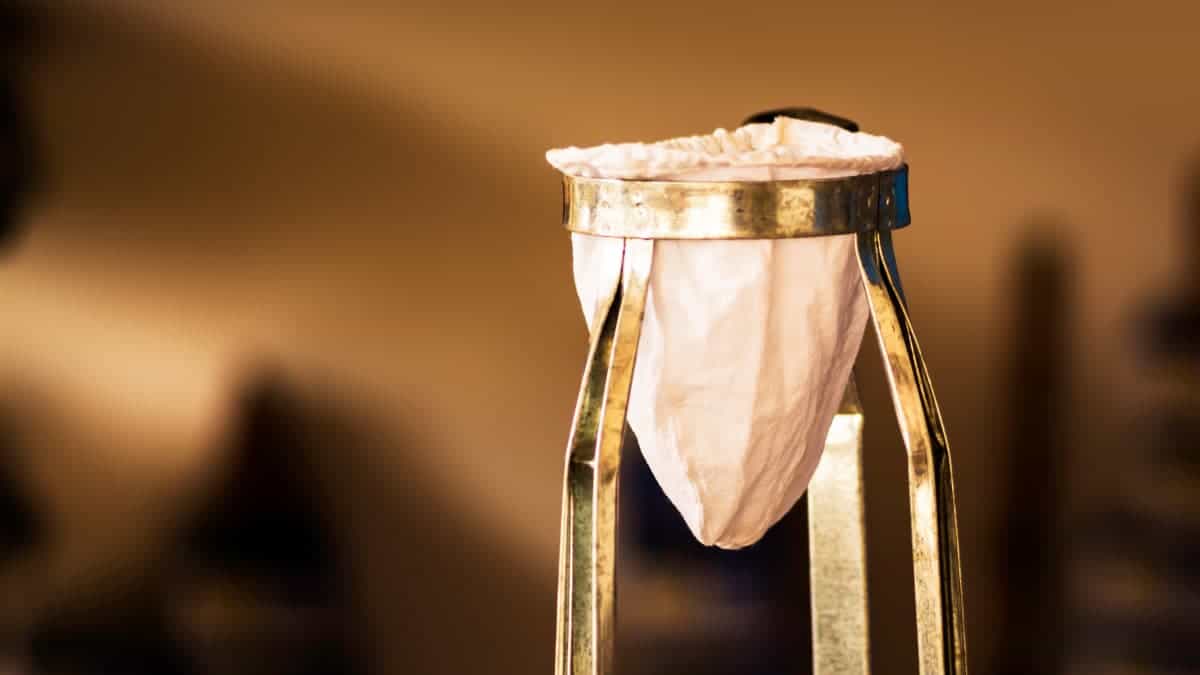The 3 Main Types of Coffee Filters Explained
Jumping into the world of specialty coffee can be overwhelming. There are different roasts, brewing methods, and coffee grinders to try. And so many kinds of coffee beans! But don’t forget about the coffee filter.
Filters can make a huge difference to taste and cup clarity. And some filters are more environmentally friendly than others.
Trying to understand the various types of coffee filters? Check out my guide to the three most popular kinds: paper, metal, and cloth.

Key Takeaways: Coffee Filter Types
- Paper filters produce a clean cup of coffee but create frequent waste.
- Metal filters are reusable but result in oily coffee.
- Cloth filters offer reusability but need more maintenance.
The Main 3 Types of Coffee Filters Explained
1. Paper Filters

PROS (+)
- Make a clear, delicious cup
- Zero sediment
- Zero cleanup
CONS (-)
- Potential papery taste
- Not reusable
Paper filters are the most common type of filter. They create a crisp, delicious cup of coffee that showcases complex flavors. And since they are disposable, they require zero maintenance and zero cleanup.
Made from wood pulp, these filters come bleached or unbleached. What’s the difference?
Bleached white paper filters produce a clearer cup of coffee. Unbleached brown filters can leave a terrible papery aftertaste. But environmentally conscious coffee drinkers might prefer unbleached filters.
If you’re making drip coffee, I would recommend using regular white filters.
Choosing between bleached and unbleached isn’t the only decision you need to make. You also need to match the filter shape to the coffee brewing method. A Mr. Coffee maker, for example, will need basket filters. But those filters won’t work for a V60 coffee brewing process.
Want to get into the nitty gritty about paper coffee filters? Different coffee makers recommend using different filter brands.
For example, CHEMEX recommends using its specialty paper for the Chemex Coffeemaker.
If you using an Aeropress, you might want to use their branded filters.
To some extent, these recommendations are marketing ploys. But some coffee brewers might notice a taste difference between paper types.
How do you figure out what your filter tastes like?
An easy way to test the filter is to pour hot water through the filter and then taste the resulting cup of water. This method will help you determine the filter quality without the distraction of coffee flavors. If the filter adds any papery taste to the water, it will do the same to the coffee.
It might take a little time to find your perfect paper filter. But one of the joys of coffee is trial and error!
Benefits
Paper filters offer the most versatility and produce complex tasting notes and flavors. They also limit the amount of oil in the final cup.
They are particularly beneficial when dealing with delicate and specialty single-origin coffee beans.
Unlike metal or cloth filters, paper traps all coffee grounds. So grind size becomes less of an issue. These filters do not leave any silt in the resulting cup.
Paper filters are also cheap. However, depending on how much coffee you make, a reusable filter might be cheaper in the long run.
Cleaning Ease
These filters are the easiest to clean because… Well, you don’t need to clean them at all!
Once you have brewed the coffee, all you need to do is remove the filter and place it in the garbage or compost bin.
You can even throw out the filters into your favorite potted plant. The used grounds will add nitrogen and other nutrients to the soil.
Paper filters will biodegrade over time. But by some metrics, single-use filters are the least environmentally friendly option. Particularly filters bleached with chlorine.
Reusability
Paper filters are not reusable. Although they are compostable, they can still have a negative environmental impact.
You need a new paper filter every time you brew coffee. So even if you have just one coffee per day, you will need to buy (and throw out) 365 paper filters per year.
But you might find the trade-offs worth it when you are in a rush.
2. Drip Net & Metal Filters

PROS (+)
- Reusability
- Full-bodied robust flavor with natural oils
- Environmentally friendly
CONS (-)
- May leave sediment or oils in the coffee
- Require regular cleaning
Made from aluminum or stainless steel, metal filters are built for durability. From a waste perspective, reusable filters are the most environmentally friendly. But metal filters require cleaning and care to maintain this reusability.
When grinding your coffee bean for a metal filter, think of the French Press brewing method. The coarser the better.
A perforated screen is the only thing separating the coffee grounds from the coffee cup. A coarser grind prevents any sediment from falling through the metal coffee filter.
The resulting cup will look oilier than what you’d produce with the other filters. So coffee lovers who desire a bold, intense cup, full of natural oils might prefer using a metal filter.
Benefits
A coarser grind also gives you more leeway with extraction time. (The coarser the grind, the longer the extraction takes.)
This flexibility helps coffee lovers who struggle with precise timing. But the longer extraction also produces rounder, chocolatey flavors.
Some coffee lovers also find that metal filters produce the best mouthfeel. If you like a cup brimming with natural oils, this might be the filter for you.
Cleaning Ease
Metal filters need a lot of tender love and care. It is important to clean out the metal filter after each use to prevent the buildup of different oils and smells. If left unwashed, the filter can turn rancid and unpleasant.
Out of the reusable filter options, metal ones are the easiest to clean. Unlike cloth filters, metal filters are very easy to clean. Just scrub and rinse. Zero extra steps.
Reusability
Reusability is where the metal filter earns its keep. By offering a high degree of reusability, metal filters produce less waste. They’re an easy way to be more environmentally friendly.
Even though they cost more upfront, metal filters can save you money over time. Unlike types of coffee filters, metal ones can last for years.
3. Cloth Filters

PROS (+)
- Environmentally friendly
- Traditional
- Budget-friendly
CONS (-)
- Require regular cleaning
- Take time to clean and dry properly
The cloth filter is one of the original methods of filtering coffee. This method is still traditionally used in coffee-growing nations like El Salvador, Costa Rica, and Nicaragua.
This filter resembles a sock, so you sometimes hear them referred to as a “coffee sock”. This filter absorbs oil and delivers a clean cup of coffee.
You can find these filters made from several different materials. Personally, I would recommend looking for one made from 100% unbleached cotton. (And rinse well before first use.)
Benefits
To some degree, cloth filters offer the best of metal and paper filters.
Like ones made from metal, cloth filters are reusable. Like paper filters, cloth filters excel at producing coffee absent of any sediment or fine grounds.
The V60 and other pour-overs can use cloth instead of paper conical filters. Alternatively, you can use the filter on its own as a ‘coffee sock’ or chorreador in Spanish.
One of the other benefits of cloth filters is experiencing part of coffee’s storied history. Cloth is the most traditional material for filtering coffee. And this method has been around for hundreds of years.
Cleaning Ease
Without proper maintenance, cloth will become rancid and stained. Unfortunately, of the three filters we’ve looked at, they are the most difficult to clean.
It can be hard to remove grounds from the cloth. I would recommend letting the filter sit in boiling water to loosen the particles.
For a deeper clean, use a cleaning powder like Cafiza. Developed as an espresso machine cleaner, Cafiza removes tough coffee stains and smells.
Cleaning isn’t the only key to maintaining a cloth filter. You also want to make sure that the cloth dries as quickly as possible.
Think about what happens when you forget to hang out your laundry. The fabric begins to smell mildewy and, in some cases, can develop mold.
The same things can happen with a cloth coffee filter.
If you’re in a rush, leave the cloth filter suspended in water inside your refrigerator.
Reusability
Cloth can last for a very long time. But this longevity depends on proper cleaning, drying, and storing.
And although they are reusable, cloth filters are less durable than metal ones. So they often require more frequent replacement… making them less environmentally friendly.
If you’re someone who is typically rushing out the door, it might be best to stick with paper filters. Skipping steps in the cleaning process will deteriorate the filter over time.
Wrapping Up: Kinds of Coffee Filters
The different types of filters provide almost limitless options. Ultimately, choosing the best filter comes down to your tastes and preferences.
Is buying an environmentally friendly filter important to you? Maybe go for a more reusable filter, like a metal or cloth one. You can even buy filters made with reused or recycled materials.
Are you often pressed for time or lack the patience to clean your filter after each use? Then paper filters might be your best option. They are easy to use, disposable, and require no cleanup.
Remember, not everyone has the same preferences. Part of the fun is figuring out what you like best!

